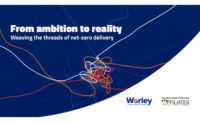Syracuse University in Syracuse, N.Y., has launched a new program to boost attention to U.S. infrastructure that it says will be the first in the country to develop research, curriculum and public outreach by integrating expertise from all of its colleges and schools.

Laura Steinberg, executive director of the new Syracuse University Infrastructure Institute (SUII) and former university engineering school dean, says the effort will span disciplines that include engineering, architecture, business and entrepreneurship, data and information management, communications, law, public policy, project finance and supply chain management in its 11 colleges and schools.
The private university has more than 22,000 undergraduate and graduate-level students and an endowment of $1.3 billion in 2017.
"To the best of our knowledge, and we have looked carefully, this is the first and only university-based institute that supports and integrates a full array of distinct disciplines with a focus on infrastructure," says Steinberg, who is on the civil engineering faculty and is a former design practitioner. She notes a similar broad-based program at Monash University in Australia, but says it "lacks all of the capabilities" of the Syracuse institute.
"Ultimately, the institute aims to support efforts to revitalize infrastructure where improvement is necessary ... and to encourage new development that is efficient, technologically advanced and socially responsible," Steinberg says.
The university is funding the new institute, with financial backing from construction-sector law firm Peckar & Abramson, New York City, and from its chairman, Steven Charney, a founding advisor who also advises the university's Whitman School of Business.
Neither Steinberg nor Charney would disclose details of the institute's funding.
Public-Private Link
Infrastructure challenges now "will require an extraordinary integration of historically distinct skillsets," says Charney, adding that disciplines at Syracuse "closely mirror those that must align in both the public and private sectors to meet current and future demand."

Charney points to a research focus that includes alternative project delivery, federal grant programs and private finance methods, as well as public-private partnership repayment mechanisms and effectiveness.
Focus also will be in "training project financiers on how public administration works," he says."There's no place I'm aware of that’s developing public administrators with a real understanding of how to connect with private finance or in engineering for smart cities."
The university's Maxwell public policy school recently launched an advanced graduate certificate in public infrastructure management and leadership geared toward full-tme students and mid-career professionals, with more curriculum adds by next fall, says Charney.
"Infrastructure needs a workforce with skills that transcend academic boundaries," says Steinberg. "Training and developing public administrators and private sector practitioners with a broader set of capabilities in deploying emerging project delivery methods is a clear priority."
One project that will test SUII's approach is in its midst—the push to redesign and rebuild the 1.4-mile elevated section of the 1950s-era Interstate-81 that bisects downtown Syracuse—a controversial and much debated project over the last decade, with many seeing the structure as an economic barrier.
While a new elevated viaduct set to cost $1.7 billion is one option for the revamp, others are an underground tunnel, priced at about $3.1 billion, and a new grade-level street grid through the section, with a projected $1.3-billion price.
The city is hoping for federal financial support for most of the replacement project.
The debate has become a political issue in New York's senatorial campaign, with incumbent Democrat Kirsten Gillibrand recently voicing support for the street-grade option but her opponent Chele Farley (R) choosing not to weigh in before local residents do, according to the Syracuse Post-Standard.
The state transportation department now has a new environmental impact study under way related to the three options that is set for release in January when a public comment period begins.
Steinberg says the debate "reflects the range of issues involved in addressing infrastructure challenges. What should be built? How will it be financed? What are the social implications of eliminating a highway that currently divides the city in half? How should a new roadway address emerging technology, such as autonomous vehicles? What are the different environmental impacts from the three design options?"
She says SUII "will be able to draw upon experts from the appropriate field to address targeted questions."






Post a comment to this article
Report Abusive Comment